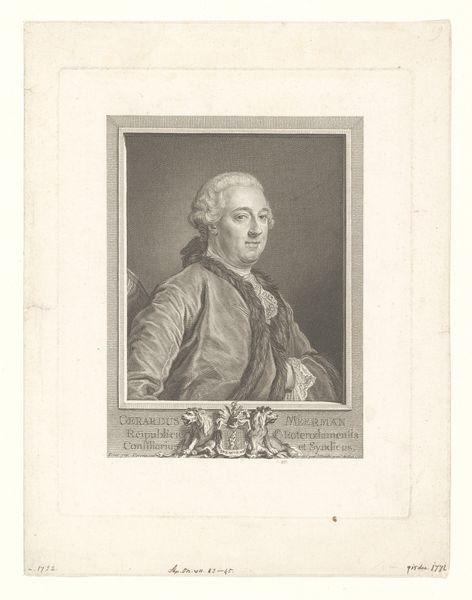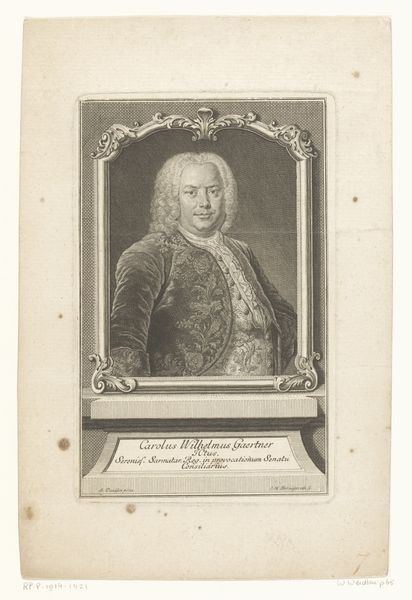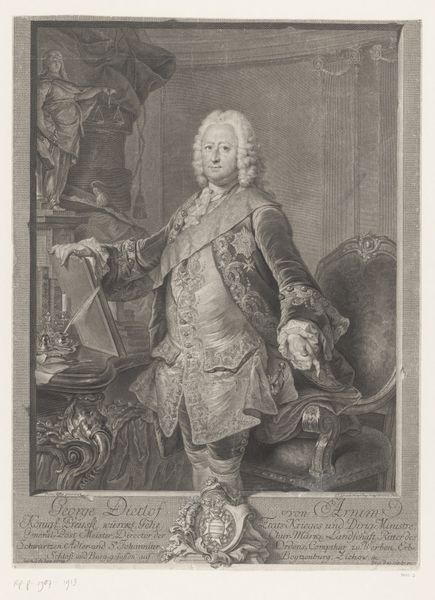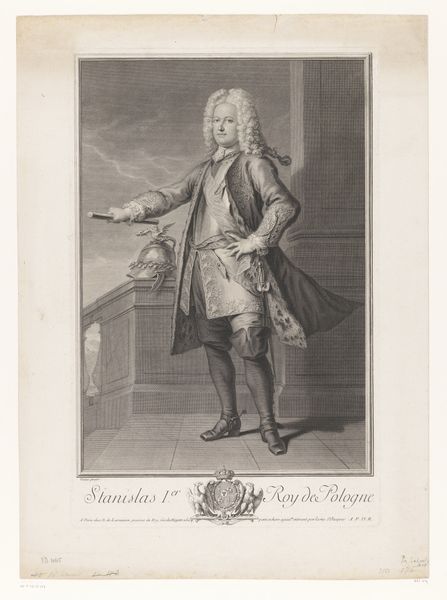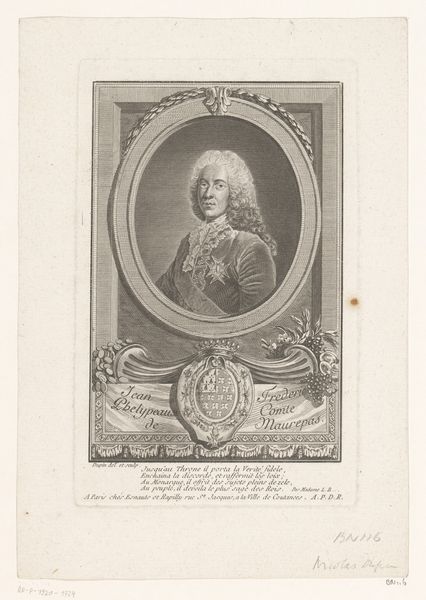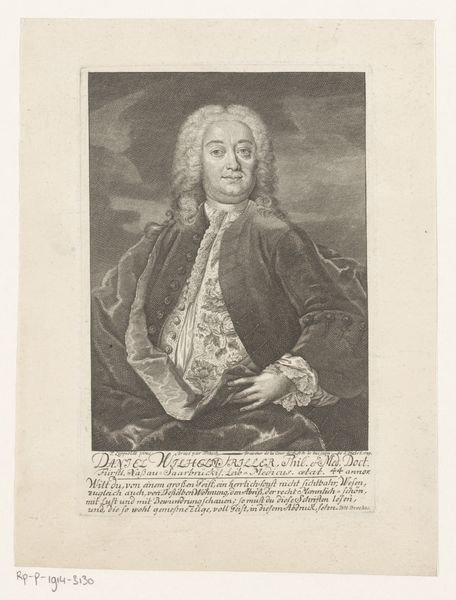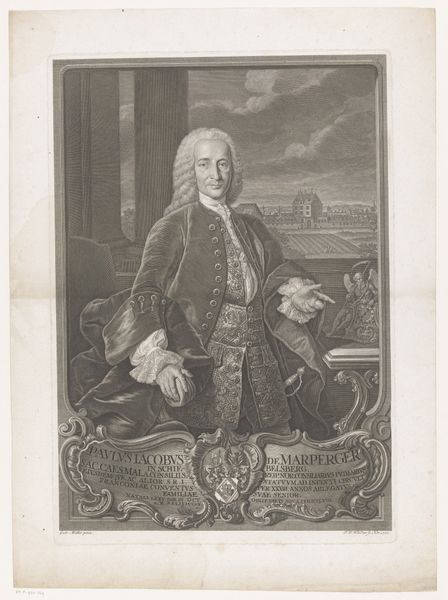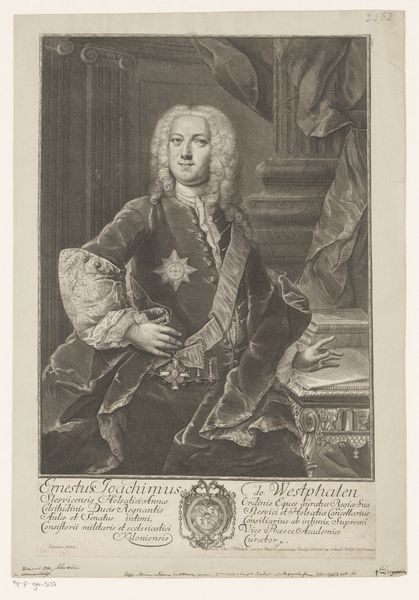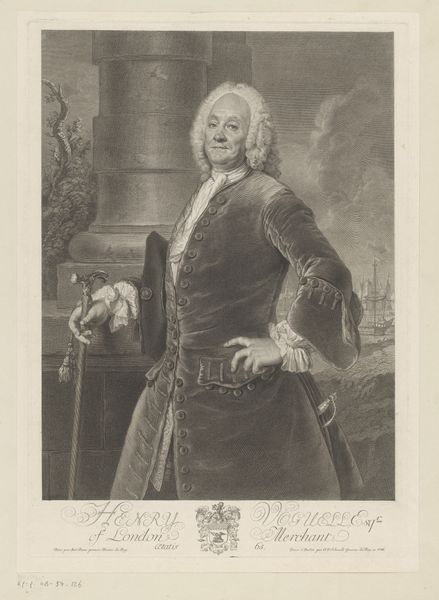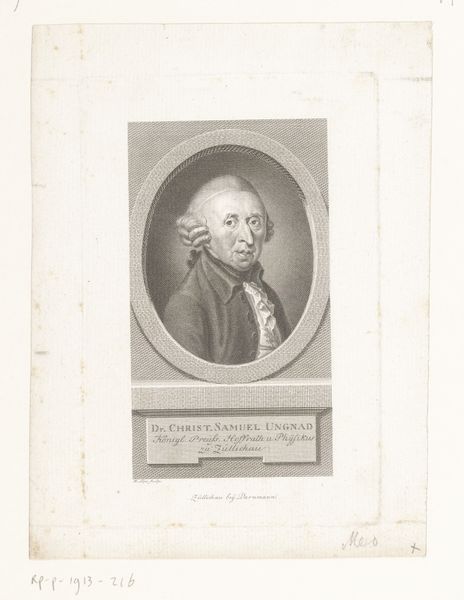
engraving
#
portrait
#
baroque
#
old engraving style
#
archive photography
#
history-painting
#
engraving
Dimensions: height 219 mm, width 158 mm
Copyright: Rijks Museum: Open Domain
Curator: This is a Baroque engraving from 1753 by Johann Martin Bernigeroth, currently housed in the Rijksmuseum. It’s entitled “Portret van Michael Leube." Editor: My first impression is one of contained opulence, with a touch of the scholarly about it, wouldn’t you say? There's a definite hierarchy present in the visual planes of the engraving. Curator: Absolutely. Considering Leube’s societal standing at the time, the details of dress become pivotal. Lace was particularly inaccessible and became a blatant status symbol due to the time and skill involved to craft the material. This image actively projects Leube’s access to financial stability but moreover his role in society as a figure of power. Editor: Notice the exquisite detail in the rendering of fabrics, especially in the way light plays across the velvet of his coat. It draws the viewer's eye but it also invites the viewer into an interpretation of Leube. The technique, specifically, contributes significantly to the portrait’s overall feeling of importance. Curator: The framing around Leube's figure subtly nods to his historical moment and is interesting to consider given the cultural context of its creation and our modern sensibilities. As an advisor to the Saxon Court, his dress codes become visual cues about a person in a position of power. He exists very much within the systems he is beholden to. Editor: The artist uses line and contrast brilliantly, creating a compelling play of dark and light that sculpts Leube’s face and gives him such presence, it really feels like an immediate invitation. He certainly commands attention through the technical execution alone. Curator: Thinking of the time the work was created helps me consider how power operated in relation to presentation. Leube is intentionally demonstrating what he stands to offer the public through this type of image. It also reminds us that portraiture served a much different function than perhaps it does now. Editor: And by appreciating the artist's formal choices and how they guide our attention, we gain a much richer and much more thorough appreciation for the subject but also the historical and aesthetic function. Curator: Agreed. Examining art in relation to identity, power, and historical positioning unveils insights that help challenge what is communicated, allowing room to further analyze through differing vantage points.
Comments
No comments
Be the first to comment and join the conversation on the ultimate creative platform.
